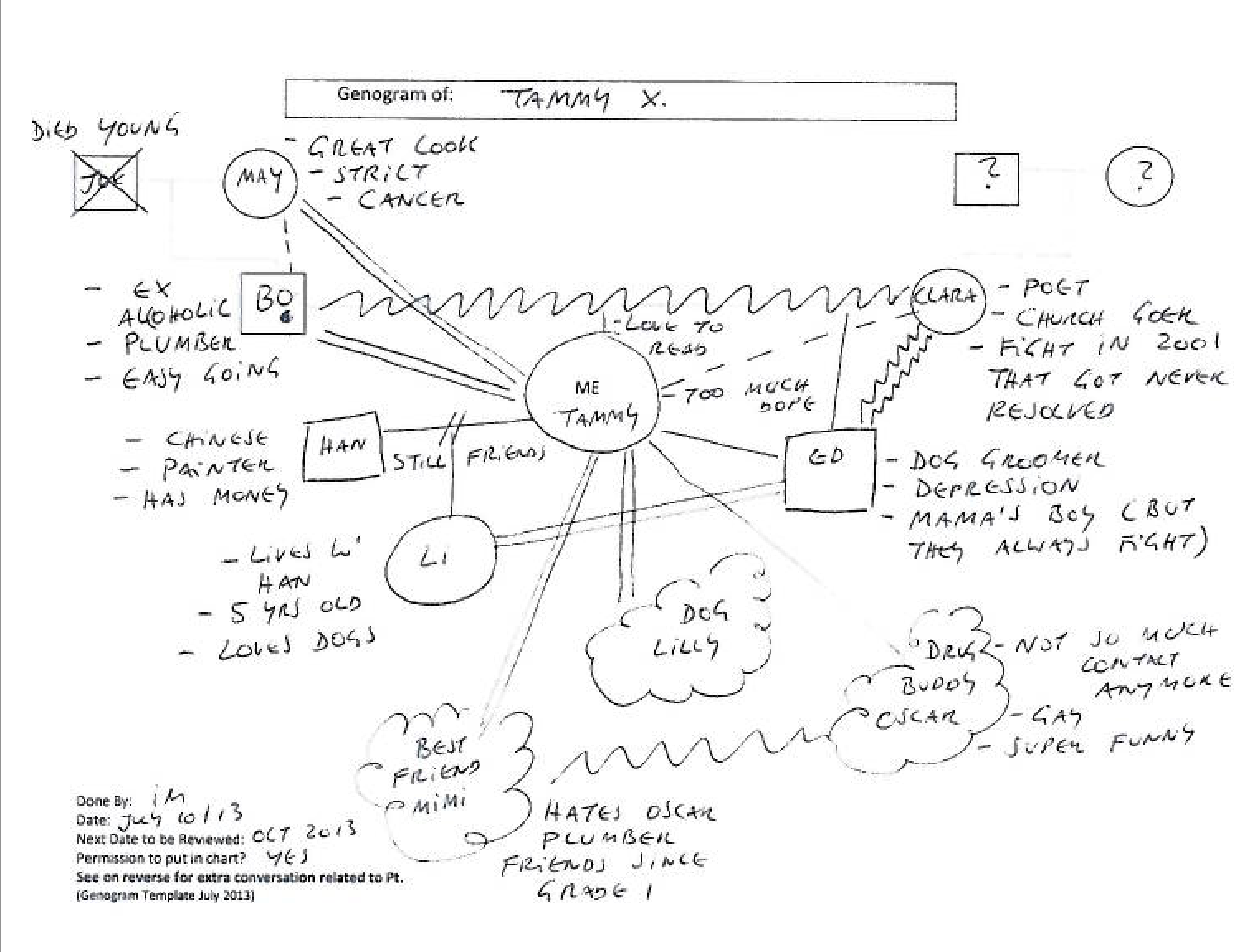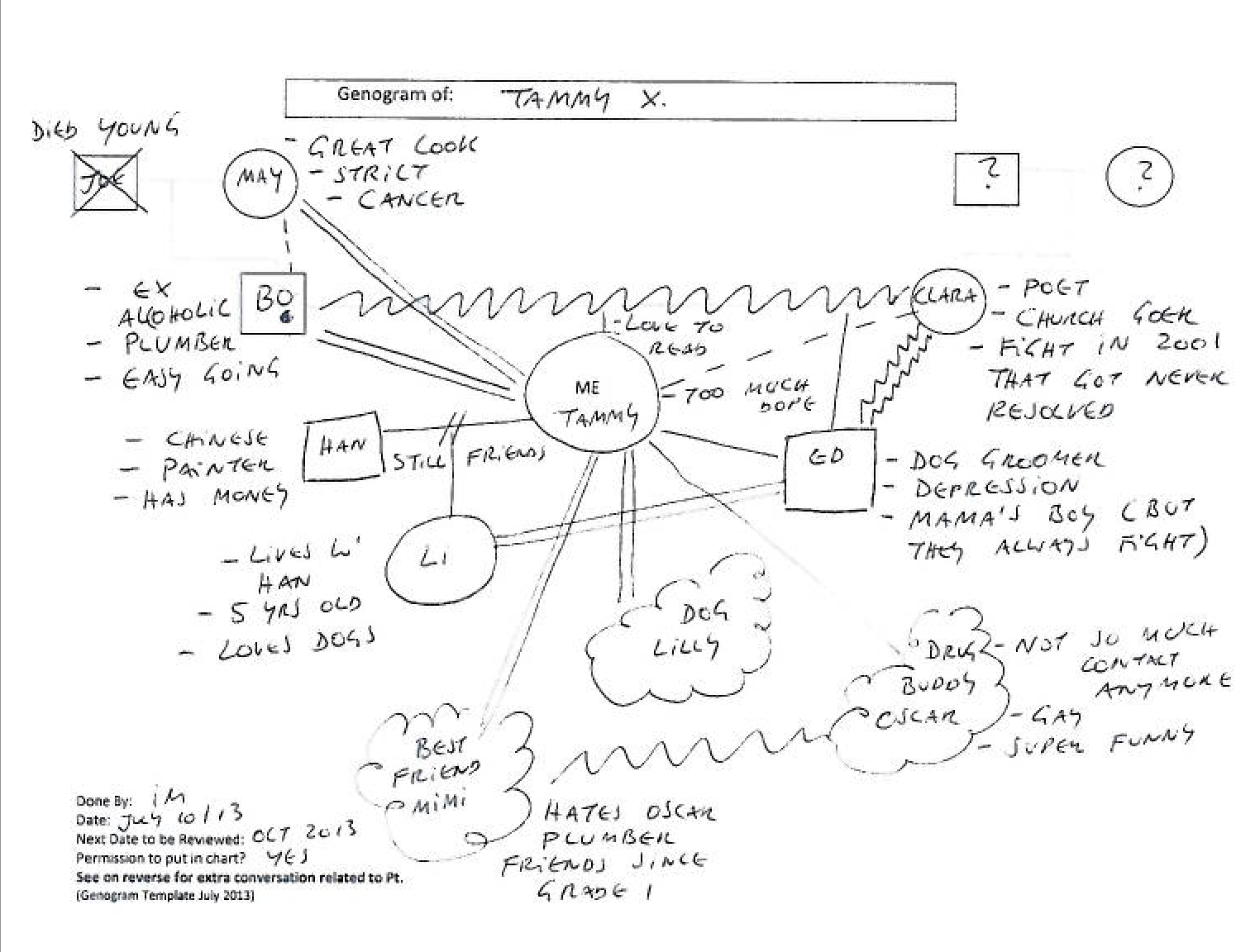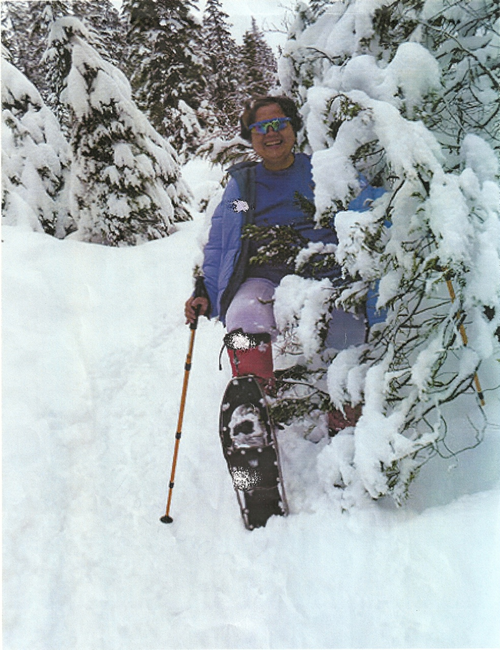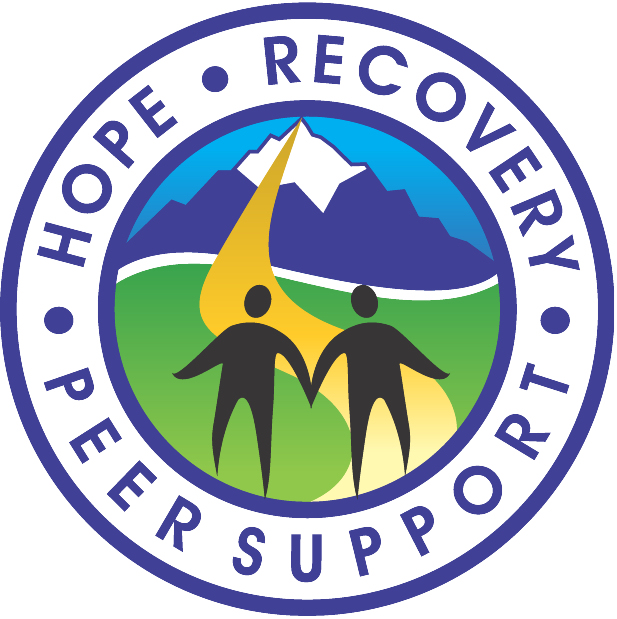
Genograms

From May to July, I had the good fortune to supervise a nursing student from Kwantlen College. Her major project was to try out the use of genograms at the Burnaby Center for Mental Health and Addiction. Genograms are a type of family tree. The one we’ve come up with can look like the one below (of course Tammy is a fictional client.)
This genogram contains
- information about the type of relationships between people. A strong, good relationship shows two lines. A conflicted relationship shows a jagged line and a distant one shows an interrupted line.
- It also adds information about people. For example the client’s brother is a dog groomer!
- As well, we have what we’ve dubbed “cloud people” – people who are not related by blood or marriage but are nevertheless important in the client’s life. This can even be a pet, as you can see! In our family team, it is very important for us to acknowledge that “family” can mean so much. It certainly can be more, or different, from our typical concept of family. Maybe one way of describing it is to say that “family” can mean anyone who is important in your life.
- The main contact person is denoted with a big dot (the father, in this case.)
The other notations are the ones that are fairly typical for genograms (e.g. https://www.therapistaid.com/therapy-guide/genograms)
It takes only 15 minutes or less to do such a genogram. The process is driven by the client, e.g. we will not direct them to give us information about their grandparents if it is obvious that they want to discuss their next-door neighbor. Clearly, that person is important to them, so let’s hear it! The other thing we have added is room on the back of the genogram for any important information that comes out in the conversation but is not really part of the genogram. In this example, because there is so much talk about pets, maybe Tammy starts talking about how she had always wanted to become a veterinarian. Talking about hopes and dreams is an important part of recovery; such a conversation warrants documentation.
We will also put a process in place to debrief with clients if it turns out that having this genogram conversation brings up traumatic memories, or is triggering in any way.
In the future, we would like to also ask family members whether there is anything THEY would like to add. This could then be layered on.
This is a pilot project. Let’s see in a year where this will take us!


